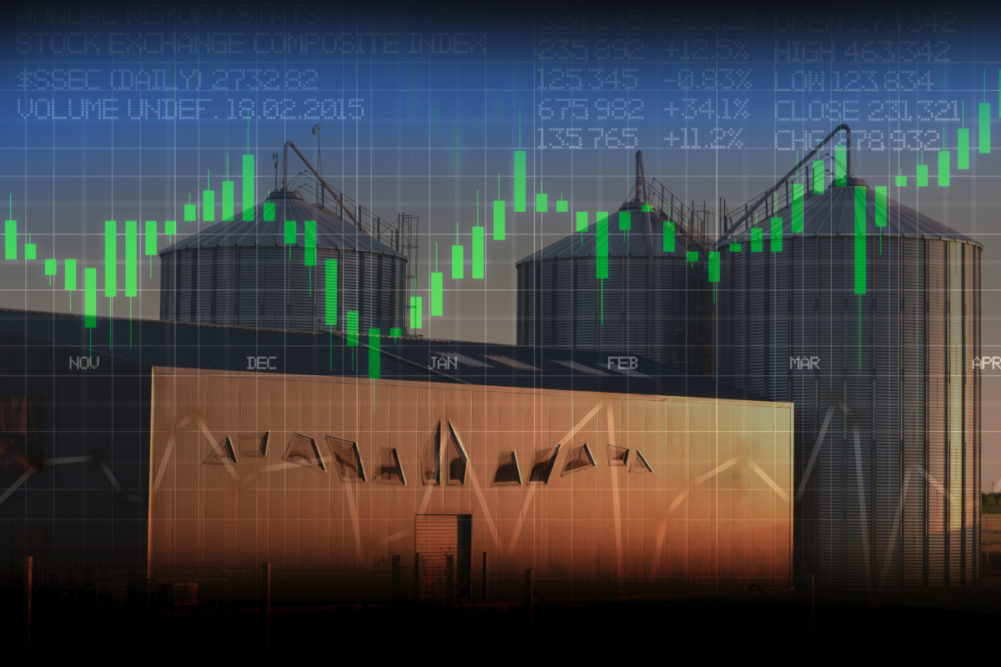 Given the extraordinary financial results of many grain-based foods companies during 2020, the indifferent investment performance of publicly traded businesses in the sector was remarkable. While many companies in the Grain-Based Foods Share Index compiled by Milling & Baking News enjoyed the widest sales growth in years, even decades, the index itself moved up only 3.7%. For grain-based foods shares, 2020 ranked 10th in advances over the last 12 years.
Given the extraordinary financial results of many grain-based foods companies during 2020, the indifferent investment performance of publicly traded businesses in the sector was remarkable. While many companies in the Grain-Based Foods Share Index compiled by Milling & Baking News enjoyed the widest sales growth in years, even decades, the index itself moved up only 3.7%. For grain-based foods shares, 2020 ranked 10th in advances over the last 12 years.
The seeming lack of investor interest in the food sector stood out not only in contrast to the overall stock market, up 16.3% in the case of the S&P 500, but also was at odds with the record flows of capital directed to private companies in the food and agriculture sphere. In an interview, Farha Aslam, managing partner of Crescent House Capital and formerly a longtime investment analyst, cited Finistere Ventures LLC data showing a record $11.6 billion invested in such companies during the first three quarters of 2020.
For much of the early 2010s, venture investment in the food and agriculture space was focused on ag tech versus food tech, according to Finistere. Capital was deployed principally to businesses focused on such areas as crop protection and precision agriculture. More recently new ag tech funding has gravitated toward animal health, automation and indoor farming.
Ag tech overall has been eclipsed over the last five years by investment in food tech, a designation referring to food technology business (and that excludes many packaged foods startups). Finistere said ag tech accounted for about $3 billion of investment funding in January-September 2020 with more than $8 billion going to food tech, up from $7.7 billion in all of 2019.
Part of the surge in funding was explained by Finistere as an effort to ensure startups had adequate capital to survive through the COVID-19 pandemic. But Finistere said other forces were at play behind extending companies’ operating runways.
Investors reacted enthusiastically in private markets to food tech companies that experienced growth attributable to the pandemic. Startups focused on meal kit solutions and e-commerce grocery have benefited as have companies developing ghost kitchens and other ways to bring eating out into the home. Finistere said 57% of capital deployed in the first nine months of 2020 went to these segments.
Additionally, investors were seen by Finistere “doubling down on perceived best-in-class companies.” As a result, the investment totals were ballooned by several mega rounds (with financing in excess of $100 million), including more than $300 million for Rappi (an online delivery company based in Colombia), $400 million for DoorDash and $200 million for Impossible Foods.
Measuring the stock market performance of publicly traded packaged food and food processing companies against the levels of funding going into ag tech and food tech startups is not an apples-to-apples comparison. Stock price movements show changes in the value of a share of a company while funding levels of startups and maturing private companies demonstrate the breadth of investors’ appetite for new businesses in the space without necessarily showing whether the value of such enterprises is rising or giving ground. Additionally, of the $8.4 billion invested in food tech during January-September 2020, two thirds was directed to sectors such as e-commerce or delivery that were peripheral to food and ingredients. The food products that fit into Finistere’s food tech definition that did attract funding were either in the plant-based and cell-based meat categories.
The trends underlying the food tech investment surge certainly are not completely bypassing consumer packaged foods companies, many of which described dramatic growth in digital business in 2020. Still, the record food tech investments last year combined with the lethargic performance of grain-based foods shares point to the need for heightened attention. While investors apparently believe the sales surge in consumer packaged foods in 2020 will not endure after the pandemic, the food tech boom points powerfully to continued dynamism in the food industry for many years to come.






